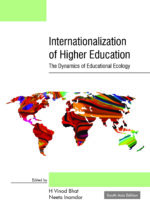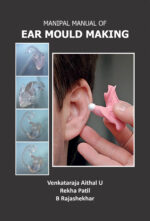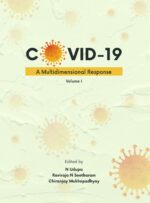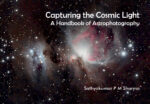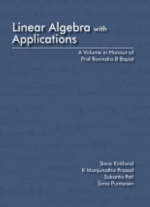Kannadadalli Patthyaparishkarana- Ondu Kaipidi
₹150.00
Author: N T Bhat
ಸ್ವಾನುಭವವಷ್ಟನ್ನೇ ಬಂಡವಾಳವಾಗಿರಿಸಿಕೊಂಡು ತೊಡಗಿದ ಉದ್ಯಮ ಈ ಹೊತ್ತಗೆಯ ರಚನೆ. ಕನ್ನಡದಲ್ಲಿ ಕರಡಚ್ಚು ಪ್ರತಿಗಳನ್ನು ತಿದ್ದಿಕೊಟ್ಟ ಅನುಭವಗಳನ್ನು ತುಸು ವಿಸ್ತರಿಸಿ ಸಣ್ಣ ಕೈಪಿಡಿಯ ರೂಪದಲ್ಲಿ ತಂದರೆ ಒಳ್ಳೆಯದಲ್ಲವೇ ಎಂಬ ಆಲೋಚನೆ ಈ ಕಿರುಹೊತ್ತಗೆಯ ರಚನೆಯ ಮೂಲ. -ಎನ್. – ತಿರುಮಲೇಶ್ವರ ಭಟ್ಟ ಡಾ. ತಿರುಮಲೇಶ್ವರ ಭಟ್ಟರು ದೀರ್ಘಕಾಲ ಅನುವಾದಕ್ಷೇತ್ರದಲ್ಲಿ (ಇಂಗ್ಲಿಷ್ನಿಂದ ಕನ್ನಡಕ್ಕೆ, ಕನ್ನಡದಿಂದ ಇಂಗ್ಲಿಷ್ಗೆ, ಜರ್ಮನ್ನಿಂದ ಇಂಗ್ಲಿಷ್ಗೆ, ಜರ್ಮನ್ನಿಂದ ಕನ್ನಡಕ್ಕೆ) ದುಡಿದವರು ಮತ್ತು ವಿವಿಧ ರೀತಿಯ ಪುಸ್ತಕಗಳ ಯೋಜನೆ, ಸಂಯೋಜನೆ, ಪುನರ್ನಿರೂಪಣೆ, ಸಂಪಾದನೆ ಮೊದಲಾದ ಕೆಲಸಗಳನ್ನು ಮಾಡಿದವರು. ಈಯೆಲ್ಲ ಕೆಲಸಗಳಲ್ಲಿ ಸತತವಾಗಿ ಒಳಗೊಂಡಿರುವುದು ಕರಡಚ್ಚು ತಿದ್ದುವ ಕೆಲಸ. ಯಾವುದೇ ಕಾರ್ಯಕ್ರಮದಲ್ಲಿದ್ದರೂ ಅದರ ಎಡೆಯೆಡೆಯ ಬಿಡುವಿನಲ್ಲಿ ಒಂದಿಷ್ಟು ಕರಡಚ್ಚು ತಿದ್ದುವ ಕೆಲಸವನ್ನು ಸತತವಾಗಿ ಮಾಡುತ್ತಲೇ ಬಂದವರು. ಪಠ್ಯಪರಿಷ್ಕರಣದ ಹಲವು ಹಂತಗಳನ್ನು ಚೆನ್ನಾಗಿ ಬಲ್ಲ ಅವರು ತಮ್ಮಲ್ಲಿರುವ ಮಾಹಿತಿಯನ್ನೂ ಅನುಭವವನ್ನೂ ಕ್ರೋಡೀಕರಿಸಿ ಕನ್ನಡದಲ್ಲಿ ಪಠ್ಯಪರಿಷ್ಕರಣದ ಆವಶ್ಯಕತೆಯೇನೆಂಬುದು ಸರಳವಾಗಿ ಈ ಪುಸ್ತಕದಲ್ಲಿ ನಿರೂಪಿಸಿದ್ದಾರೆ. ಅವರಿಂದ ಭಾಷಾಕ್ಷೇತ್ರಕ್ಕೆ ಇನ್ನಷ್ಟು ಸೇವೆ ಸಲ್ಲಲಿ ಎಂಬುದು ಮನದಾಳದ ಆಶಯ. – ಪಾದೇಕಲ್ಲು ವಿಷ್ಣು ಭಟ್ಟ.
Interested readers may write to us at mup@manipal.edu about purchasing the book.
| Also available on |
| Categories: | Academic and Reference, Kannada |
|---|
Related products
-
Internationalization of Higher Education: The Dynamics of Educational Ecology
₹500.00Editors: H Vinod Bhat, Neeta InamdarThe mobility of scholars seeking knowledge has been a part of the university ideal for centuries. History holds testimony to the fact that these mobilities have also altered the lives of people in different regions. Universities have played a pivotal role in the movement of people across borders and the resultant transformation of societies due to transcultural interactions.In this book, the editors have brought together ideas on the changing dynamics of these mobilities of scholars and the interconnectedness of higher education institutions in today’s world. An attempt is also made to record the implications of these international collaborations in knowledge generation and dissemination within the educational ecology. The notion of educational ecology is explored through the articles in the book to comprehend the power play that exists in the dimension and the direction of internationalization of higher education. All this is done with the hope that the opening up of education to global opportunities may, over a period of time, lead to equitable distribution of opportunities worldwide.Interested readers may write to us at mup@manipal.edu about purchasing the book.
International Edition available on South Asia Edition available on -
A Concise Textbook of Drug Regulatory Affairs
₹290.00This book has 12 chapters covering nearly all the areas of Drug Regulatory Affairs. Various aspects of Drug Regulatory Affairs such as new drug approval procedure, pharmacovigilance, product recall, evolution of drug regulations in the United States of America (USA) and process of drug approval in the USA and European Union, bioequivalence regulations, electronic Common Technical Documents (eCTD), environmental regulations, orphan drugs pharmaceutical pricing and control policy, Pharmacovigilance system in India and the USA, Product Recall, regulations of pharmaceutical drug promotion and Pharmacy Practice regulations are covered in this book. As a whole, the book is a comprehensive reference book on regulatory affairs and will be very useful for the practicing professionals and students alike.
Interested readers may write to us at mup@manipal.edu about purchasing the book.
-
Geoffrey Bawa – A Conscious Perception
₹650.00This book is all about giving the readers a peek view into the life of Geoffrey Bawa; Sri Lanka’s most famous architect… a book that reveals an insight into his work through his most famous projects accompanied by beautiful hand drawn illustrations. Alluring and simply authentic, these self-narrative illustrations are a result of a personal experience. This book will give readers an understanding of how successfully Geoffrey Bawa had inculcated spaces, vistas and landscape with that of the built environment bringing about a touch of Modern Tropism and fusing it together with the rich culture and traditions of Sri Lanka.
Interested readers may write to us at mup@manipal.edu about purchasing the book.
-
Manipal Manual of Ear Mould Making
₹195.00Authors: Venkataraja Aithal U, Rekha Patil and B Rajashekhar
Manipal Manual of Ear Mould Making is a comprehensive workbook of value to students of Audiology & hearing professionals who wish to understand the nuances of this skill that is paramount for optimization of hearing aid fitting. This is a compilation of the authors? years of experience in the deft skills of ear mould making and patient care in Manipal Ear Mould lab. Considerable efforts have gone in to bringing out this manual by incorporating appropriate pictures, stepwise procedures and simple instructions. This manual, besides appraising the readers of the procedure would also assist them in learning the dos and donts picked up out of the authors? clinical experience. This will be a reflection of our ongoing efforts to derive the best out of the rapidly developing technology in the area of hearing impairment.
Interested readers may write to us at mup@manipal.edu about purchasing the book.
Also available on

-
Pharmaceutical Consumer Complaints: A Guide to Academia and Pharmaceutical Industry
₹795.00Editors: Girish Pai Kulyadi, Muddukrishna B S, Richa Ajay Dayaramani
This book is an excellent guide in analyzing consumer complaints and will aid the students who are yet to gain industry experience. It is necessary for resolving consumer complaints in pharmaceutical industry where such concerns are frequently received. The case studies provide a vivid description of defects that will help identify the nature of the issue, possible root cause of such complaints, and subsequent remediation.
Interested readers may write to us at mup@manipal.edu about purchasing the book.
-
COVID19: A Multidimensional Response
₹2,200.00Editors: N Udupa, Raviaraja NS, Chiranjay Mukhopadhya,
COVID-19 disease is caused by the SARS-CoV-2 virus, first detected in November-December 2019 in Wuhan, China. Thus far, more than 7 million people have been infected with the novel coronavirus across the globe, and the count is increasing with every passing day. Even though it causes severe respiratory problems, the majority of patients show mild symptoms, and pathogenesis is under investigation. Although several drugs are being developed and many of them are undergoing clinical trials, currently there are no approved drugs/vaccines to cure this disease. Personal hygiene and social distancing are important means to prevent the spread of this disease. With the advancements in scientific research, humankind is hoping to find a potent drug/vaccine for this disease at the earliest. The health care professionals and scientific community are at their maximum in combating this viral infection. In this book, an attempt is made to compile various aspects of COVID-19 in a single platform, which include aetiology, epidemiology, its clinical manifestations, diagnosis, pathological, clinical and therapeutic facets, comorbidities, risk factors, and the essential precautionary measures. This book comprises around 29 chapters contributed by various experts from research and clinical backgrounds.
Interested readers may write to us at mup@manipal.edu about purchasing the book.
-
Capturing the Cosmic Light – A Handbook of Astrophotography
₹670.00Author: Sathyakumar P M Sharma
The Handbook of Astrophotography is the first book dedicated to Astronomical Imaging through modest equipment, and the first to be published in India. It is a chronicle of the techniques learnt and employed by the author and is by no means proprietary. It is assumed that the reader is equipped with the basic knowledge to use a digital camera. After showing the many methods to capture the Cosmos, the book shows how to process these images. It is designed to be a handbook and not a user manual. The author hopes that the reader will be confident in astronomical imaging and develop his/her own techniques after reading the book. Sathyakumar started Astrophotography in January 2006 with a homemade wooden star-tracking mount and a camera borrowed from a friend. He later used his homemade Newtonian reflector telescope and an inexpensive digital camera to capture photos of the Moon. With an MSc in Aerospace engineering from the University of Salford, Manchester, he joined Opticstar Ltd, as a design engineer. There he was trained on the latest of astronomical instruments available for the amateur astrophotographer and eventually purchased the Celestron C8 Schmidt cassegrain telescope and the CG-5 Equatorial mount. Currently, he uses a GSO 6 inch RC telescope and an HEQ5-PRO computerized mount as well as an Orion 80ED Apochromatic telescope for astrophotography. He also owns an Astrotrac to take wide field vistas of the Cosmos. He is now employed as a Scientific Officer at Karnataka Science and Technology Promotion Society, Department of Science and Technology, Govt. of Karnataka.
Interested readers may write to us at mup@manipal.edu about purchasing the book.
-
Linear Algebra with Applications
₹650.00Linear Algebra with Applications portrays selected articles published earlier by Prof Ravindra B Bapat in various reputed journals. This volume published in honour of Prof Bapat, on the occasion of his 60th birthday, consists of his original research articles written in the area of (i) Permanent, Determinant and their applications, (ii) Non-negative Matrices, (iii) Matrix Methods in Statistics and Graph theory, and (iv) Generalized Inverses of a Matrix. Starting with an article A Generalization of a Theorem of Ky Fan on Simplicial Maps, his first article published in 1980, several articles probing the properties of permanent and determinant, characterization of generalized inverses, spectral properties of graphs, and applications of matrix methods in statistics are compiled in this volume. The articles selected in this book will certainly inspire the young linear algebraists and provide several matrix techniques to solve different problems in the area of applied linear algebra.
Interested readers may write to us at mup@manipal.edu about purchasing the book.


